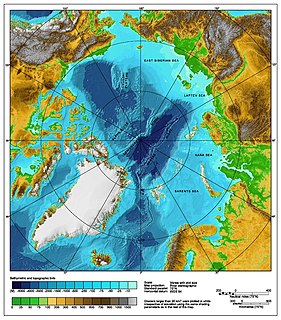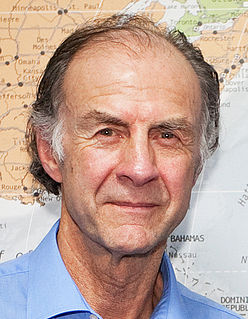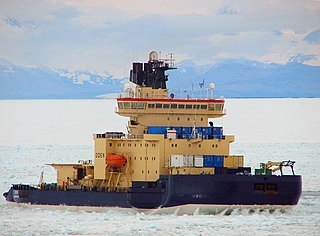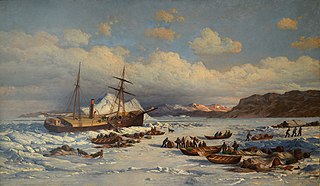 W
WThe North Pole, also known as the Geographic North Pole or Terrestrial North Pole, is the point in the Northern Hemisphere where the Earth's axis of rotation meets its surface. It is called the True North Pole to distinguish from the Magnetic North Pole.
 W
WAndrée's Arctic balloon expedition of 1897 was an effort to reach the North Pole in which all three Swedish expedition members – S. A. Andrée, Knut Frænkel, and Nils Strindberg – perished. Andrée, the first Swedish balloonist, proposed a voyage by hydrogen balloon from Svalbard to either Russia or Canada, which was to pass, with luck, straight over the North Pole on the way. The scheme was received with patriotic enthusiasm in Sweden, a northern nation that had fallen behind in the race for the North Pole.
 W
WArktika is a retired nuclear-powered icebreaker of the Soviet Arktika class. In service from 1975 to 2008, she was the first surface ship to reach the North Pole, a feat achieved on August 17, 1977, during an expedition dedicated to the 60th anniversary of the October Revolution.
 W
WArktika 2007 was a 2007 expedition in which Russia performed the first ever crewed descent to the ocean bottom at the North Pole, as part of research related to the 2001 Russian territorial claim, one of many territorial claims in the Arctic, made possible, in part, because of Arctic shrinkage. As well as dropping a titanium tube containing the Russian flag, the submersibles collected specimens of Arctic flora and fauna and apparently recorded video of the dives. The "North Pole-35" manned drifting ice station was established.
 W
WCamp Barneo is a private Russian temporary ice base, established annually since 2002 on an ice floe relatively close to the North Pole, used largely for tourist excursion purposes. Depending on the time of year, the ice camp can serve as one of the northernmost inhabited places on Earth.
 W
WRear Admiral Richard Evelyn Byrd Jr. was an American naval officer and explorer. He was a recipient of the Medal of Honor, the highest honor for valor given by the United States, and was a pioneering American aviator, polar explorer, and organizer of polar logistics. Aircraft flights in which he served as a navigator and expedition leader crossed the Atlantic Ocean, a segment of the Arctic Ocean, and a segment of the Antarctic Plateau. Byrd claimed that his expeditions had been the first to reach both the North Pole and the South Pole by air. His claim to have reached the North Pole is disputed. He is also known for discovering Mount Sidley, the largest dormant volcano in Antarctica.
 W
WAlbert Paddock Crary, was a pioneer polar geophysicist and glaciologist. He was the first person to have stepped foot on both the North and South Poles, having made it to the North Pole on May 3, 1952 and then to the South Pole on February 12, 1961, as the leader of a team of eight. The South Pole expedition set out from McMurdo Station on December 10, 1960, using three Snowcats with trailers. Crary was the seventh expedition leader to arrive at the South Pole by surface transportation. He was widely admired for his intellect, wit, skills and as a great administrator for polar research expeditions.
 W
WSir Ranulph Twisleton-Wykeham-Fiennes, 3rd Baronet,, commonly known as Sir Ranulph Fiennes, and sometimes as Ran Fiennes, is a British explorer and holder of several endurance records. He is also a writer and poet.
 W
WFram ("Forward") is a ship that was used in expeditions of the Arctic and Antarctic regions by the Norwegian explorers Fridtjof Nansen, Otto Sverdrup, Oscar Wisting, and Roald Amundsen between 1893 and 1912. It was designed and built by the Scottish-Norwegian shipwright Colin Archer for Fridtjof Nansen's 1893 Arctic expedition in which the plan was to freeze Fram into the Arctic ice sheet and float with it over the North Pole.
 W
WA Canadian postal code is a six-character string that forms part of a postal address in Canada. Like British, Irish and Dutch postcodes, Canada's postal codes are alphanumeric. They are in the format A1A 1A1, where A is a letter and 1 is a digit, with a space separating the third and fourth characters. As of October 2019, there were 876,445 postal codes using Forward Sortation Areas from A0A in Newfoundland to Y1A in the Yukon.
 W
WUSCGC Healy (WAGB-20) is the United States' largest and most technologically advanced icebreaker as well as the US Coast Guard's largest vessel. She is classified as a medium icebreaker by the U.S. Coast Guard. She is homeported in Seattle, Washington, and was commissioned in 1999. On 5 September 2015, Healy became the first unaccompanied United States surface vessel to reach the North Pole.
 W
WSir Edmund Percival Hillary was a New Zealand mountaineer, explorer, and philanthropist. On 29 May 1953, Hillary and Sherpa mountaineer Tenzing Norgay became the first climbers confirmed to have reached the summit of Mount Everest. They were part of the ninth British expedition to Everest, led by John Hunt. From 1985 to 1988 he served as New Zealand's High Commissioner to India and Bangladesh and concurrently as Ambassador to Nepal.
 W
WMount Qaf, or Qaf-Kuh, also spelled Cafcuh and Kafkuh (Template:Lang-dari), or Jabal Qaf, also spelled Djebel Qaf, or Koh-i-Qaf, also spelled Koh-Qaf and Kuh-i-Qaf or Kuh-e Qafکوہ قاف) is a legendary mountain in the popular mythology of the Middle East.
 W
WUSS Nautilus (SSN-571) was the world's first operational nuclear-powered submarine and the first submarine to complete a submerged transit of the North Pole on 3 August 1958. Her initial commanding officer was Eugene Parks "Dennis" Wilkinson, a widely respected naval officer who set the stage for many of the protocols of today's Nuclear Navy, and who had a storied career during military service and afterwards.
 W
WThe Norge was a semi-rigid Italian-built airship that carried out the first verified trip of any kind to the North Pole, an overflight on 12 May 1926. It was also the first aircraft to fly over the polar ice cap between Europe and America. The expedition was the brainchild of polar explorer and expedition leader Roald Amundsen, the airship's designer and pilot Umberto Nobile and American adventurer and explorer Lincoln Ellsworth who, along with the Aero Club of Norway, financed the trip, which was known as the Amundsen-Ellsworth 1926 Transpolar Flight.
 W
WOden is a large Swedish icebreaker, built in 1988 for the Swedish Maritime Administration. It is named after the Norse god Odin. First built to clear a passage through the ice of the Gulf of Bothnia for cargo ships, it was later modified to serve as a research vessel. Equipped with its own helicopter and manned by 15 crew members it has ample capacity to carry laboratory equipment and 80 passengers, functioning independently in harsh Polar ice packs of the Arctic and Antarctic seas. It was the first non-nuclear surface vessel to reach the North Pole, together with the German research icebreaker Polarstern. It has participated in several scientific expeditions in Arctic and Antarctica.
 W
WThe Open Polar Sea was a hypothesized ice-free ocean surrounding the North Pole. This unproved and eventually-disproved theory was once so widely believed that many exploring expeditions used it as justification for attempts to reach the North Pole by sea or to find a navigable sea route between Europe and the Pacific across the North Pole.
 W
WThe Polaris expedition of 1871–1873 was one of the first serious attempts to reach the North Pole after that of British naval officer Sir Edward Parry, who reached 82° 45′ N in 1827. Funded by the U.S. government, the expedition's notable achievement was reaching 82° 29′ N by ship, a record at the time.
 W
WThe Rupes Nigra, a phantom island, was believed to be a 33-mile-wide black rock located at the Magnetic North Pole or at the North Pole itself. It purportedly explained why all compasses point to this location. The idea came from a lost work titled Inventio Fortunata, and the island features on maps from the sixteenth and seventeenth centuries, including those of Gerardus Mercator and his successors. Mercator describes the island in a 1577 letter to John Dee:In the midst of the four countries is a Whirl-pool, into which there empty these four indrawing Seas which divide the North. And the water rushes round and descends into the Earth just as if one were pouring it through a filter funnel. It is four degrees wide on every side of the Pole, that is to say eight degrees altogether. Except that right under the Pole there lies a bare Rock in the midst of the Sea. Its circumference is almost 33 French miles, and it is all of magnetic Stone [Jacobus Cnoyen] years ago.
 W
WSanta's Workshop is the legendary workshop where Santa Claus and his elves are said to make the toys and presents given out at Christmas. The exact "location" of Santa's workshop varies depending upon local culture. There are at least eight claimed locations for his workshop. For example, children in Canada send letters to Santa's Workshop at his North Pole location in Canada with the unique postal code of "H0H 0H0". Children in the United States believe the workshop is a sprawling commune located at the North Pole. Children in the United Kingdom and Finland tend to believe that Father Christmas' Workshop is located in Finland in Lapland. In addition to housing the factory where toys are either manufactured or distributed by the elves, the complex also houses the residence of Santa, his wife, companions, and all of the reindeer.
 W
WUSS Skate (SSN-578), the third submarine of the United States Navy named for the skate, a type of ray, was the lead ship of the Skate class of nuclear submarines. She was the third nuclear submarine commissioned, the first to make a completely submerged trans-Atlantic crossing, and the second submarine to reach the North Pole, and the first to surface there.